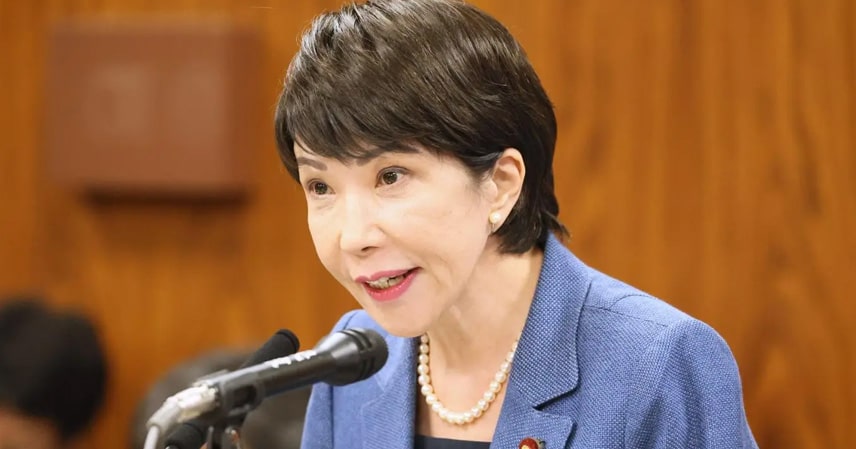The political storm in Japan began with Shigeru Ishiba’s sudden resignation, catching the Liberal Democratic Party (LDP) leadership off guard and drawing the attention of the entire East Asian region. As soon as the prime minister stepped down, five contenders quickly entered the race to become the next LDP president—and effectively Japan’s new prime minister.
Early polls show Sanae Takaichi leading, with Shinjiro Koizumi close behind. This leadership contest has turned into not only a domestic political struggle but also a major test of Japan’s future trajectory, one that could directly affect Sino-Japanese relations. For the first time in years, Beijing made its stance clear in advance: “Whoever you choose, we will respond accordingly.”
Power Struggles with Bigger Agendas
Ishiba’s resignation may seem sudden, but it was not entirely unexpected. His government struggled with weak economic performance and declining approval ratings, leaving the LDP with a political “hot potato.”
Five candidates immediately stepped up: Sanae Takaichi, Shinjiro Koizumi, Yoshimasa Hayashi, Toshimitsu Motegi, and Takashi Kobayashi. On the surface, this is an internal party election, but in reality, the outcome will shape Japan’s domestic policies and Asia’s diplomatic balance—especially relations with China.
The Candidates and Their Stances on China
- Sanae Takaichi: Widely seen as the successor to Shinzo Abe’s hawkish line. She calls for higher defense spending, stronger U.S.-Japan alliance ties, and tougher stances toward China. She has also visited the Yasukuni Shrine multiple times, symbolizing her hardline nationalist views.
- Shinjiro Koizumi: Presents a more moderate, dialogue-based approach, but his record shows otherwise. He too has visited Yasukuni and publicly labeled China, Russia, and North Korea as “security threats.” His rhetoric may sound softer, but his core stance remains firm.
- Yoshimasa Hayashi: A career diplomat with deeper knowledge of China, but his low support ratings make him more of a backup candidate unless front-runners falter.
Whether Takaichi or Koizumi wins, the reality is the same: Japan’s overall political climate has shifted further to the right, with strong anti-China sentiment becoming mainstream.
Beyond Individual Politics: The Structural Shift
Japan’s political logic goes deeper than “who is tougher on China.”
The LDP remains in power, but it lacks majority control in both houses of parliament. This means any prime minister will face limited governing power and need coalition support. To consolidate internal backing, candidates are incentivized to appeal to conservative voters, and the “China threat card” has proven the most effective tool.
Thus, Takaichi rose in popularity by repeatedly warning against China and even proposing to rename the Self-Defense Forces into a “National Defense Army” and enshrine it in the constitution—a move with serious implications.
Koizumi, though styled as more modern, is similarly constrained by public pressure to take a harder line on China.
In short, being tough on China has become Japan’s new “political correctness.”
China’s Response: Drawing Clear Red Lines
Traditionally, Beijing refrained from commenting on Japanese leadership contests. But this time, China has spoken out early and firmly.
The Chinese Foreign Ministry urged Japan to “learn from history and look to the future”, emphasizing that bilateral ties must be built on mutual respect and peaceful coexistence.
On Taiwan, Beijing’s warning was even sharper. Takaichi openly called for joint military planning with the U.S. to counter reunification efforts—a position Beijing considers a direct provocation to its sovereignty.
In Beijing’s words: “Who you elect is your choice, but if you provoke us, we will respond.” This marks a significant shift away from ambiguity to explicit deterrence.
Japan’s Limitations: Can It Really Afford to “Get Tough”?
Rhetoric aside, can Japan truly sustain a hardline stance?
China’s military strength far surpasses Japan’s. Three aircraft carriers, dozens of destroyers, stealth fighters like the J-20, and an integrated missile system make China’s armed forces formidable. By contrast, Japan’s Self-Defense Forces, though highly capable, remain smaller, dependent on U.S. weapons systems, and strategically constrained by geography.
Moreover, the U.S. is no longer the unquestioned security guarantor it once was. The 2025 Trump administration prioritizes cost-benefit calculations over alliance solidarity. Whether Washington would risk a direct clash with Beijing for Tokyo remains uncertain.
Neighbors Cannot Move: Cooperation Is the Only Path
Ultimately, China and Japan cannot avoid each other. Long-term confrontation benefits neither side. Beijing’s stance remains straightforward:
- Respect leads to cooperation.
- Provocation leads to countermeasures.
The real test lies not in the election itself, but in how the new Japanese prime minister manages relations afterward. If leadership continues chasing short-term political gains through anti-China rhetoric, tensions will persist. If, however, Japan takes a strategic, long-term view, prioritizing diplomacy over confrontation, Asia’s stability will be better served.
Whether it is Takaichi, Koizumi, or another candidate, Beijing’s position is clear: do not cross the red lines.
This election may appear to be just another power reshuffle within Japan, but it could mark a critical turning point in Sino-Japanese relations. The future depends on whether Japan chooses to shout louder—or walk more steadily.
References
- Japanese media polls on LDP leadership race (2025)
- Chinese Foreign Ministry statements on Japan relations (2025)



